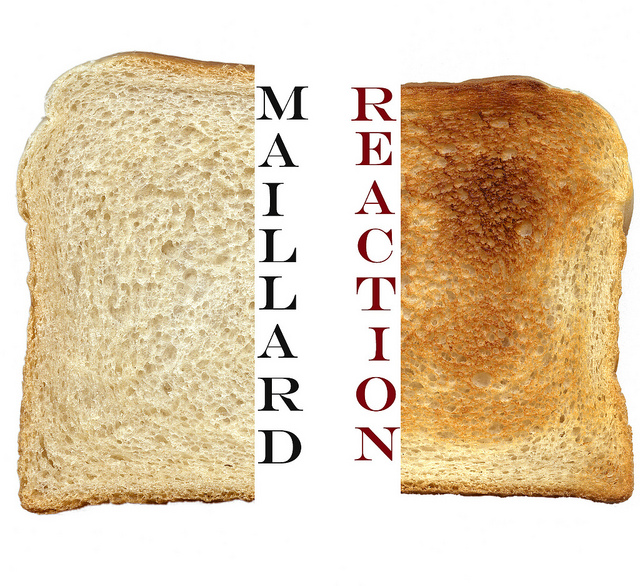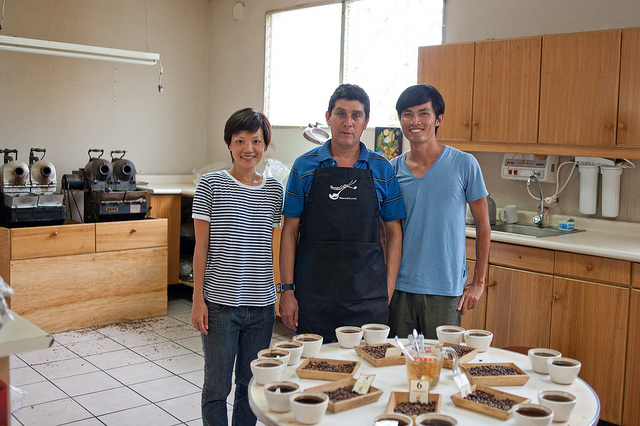Scott Rao Roasting Masterclass: How to Roast Specialty Coffee
We attended a Scott Rao’s “Roasting Masterclass” at Prufrock Coffee, London last week. Who’s Scott Rao? He’s a “Coffee Idol” to the Specialty Coffee generation. His “essperience” spans over two decades, ranging from barista to coffee roaster & consultancy work. He’s the author of authoritative, comprehensive and instructive guides including “The Coffee Roasters Companion”.
SEE ALSO: How YOU Can Make a Career Out of Coffee Roasting
“The most authoritative & comprehensive guides to coffee preparation”
Scott has scientifically scrutinized the minutiae’s of coffee roasting. He’s a sort of “coffee martyr”. Why? He’s analysed coffee so deeply, he’s sacrificed its romantic mysticism. He confessed to being unable to drink coffee without dissecting the cup.
Part of PDG’s mission is “transparency” or “understanding your cups origins”. The roasting process is part of this. Roasting dictates how your coffee tastes.
What Did We Learn from Scott Rao?
Scott left the audience mesmerized with his spectacularly extensive knowledge of everything to do with roasting. Scott exposed us to a range of knowledge. From the misleading undercurrents of certain terminologies, such as “drying phase” and “development time” to historical narrations outlining how under-extraction led people to roast darker to eliminate flaws often present in coffee brewing/making processes.
We strongly urge roasters to purchase Scott’s book & below represents a petite slice of what we learnt during the 3 hours presentation…
Please note this information is largely irrelevant for “air roasters”.
The talk was engaging for roasters, cafe owners, competitive baristas & amateur enthusiasts. Photo credit: coffee-photography.com
Tips for Roasters
- Never pull out “trier” (unless calculating the scorching line). It’s tempting to examine your roasts progress, however, for optimum resultsv keep the trier in. Why? It allows cold air to enter the drum.
Credit: Tonx
- Don’t rely on “small batch” trial roasts as calculations are not easily transferrable to larger batch sizes –. Why? It’s extremely challenging and inaccurate to scale up heat transfer & profile development to recalculate for larger batch sizes. With practice and proper bean measurement of bean parameters, you can get more accurate, higher quality first batch data with a lot of green beans. There are methods to scale up (to a degree) but you must know how high quality your data is before making the assumption you can scale up data for a larger batch!
- Purchase Cropster computer software – What’s Cropster? According to the creators, with Cropster ‘Roasting profiles are tracked, logged and clearly visualized for usage both during and after the roasting process. This allows you to focus purely on the roasting process. Not only will you be able to profile roasts, but you will also know in real time if you are meeting your high standards”.

- Where to place probe? Area with maximum bean contact compared to air – if the bean catches too much air, roast data will be useless. Ensure the paddles don’t touch the probe (you may need to bend probe).
- The highest gas setting you should use is one you start with. Never increase your gas later on during the roast –Why? If you gradually increase gas, you will sacrifice roasting development and invite burnt flavours. Any time, you increase gas (which increases drum temperature); you’ve made a mistake. Please note this does not mean using 100% gas at the charge.
- Use a super thin probe – It’s commonly conceived that should be at least 10 times the diameter (but Scott mentioned he did not know this for sure).
Credit: Probe Guide: A Roasters’ Perspective
- Never recirculate airflow and be extremely shifting airflow mid roast. Why? It damages roast profile.
- Purchased vacuum-sealed & grain pro green beans.
Grainpro bags. Credit: Ministry Grounds Coffee
Advice for All Coffee Affeciandados
- You CAN FREEZE coffee. However, fresh coffee must be dosed into bags and frozen at sub-zero temperatures. You can’t store a jar in the freezer and take coffee as and when you need it.
- To develop your coffee taste pallet – practice cupping coffee “blind”. We all have biases.
Always cup & taste BLIND. Credit: Dennis Tang
- Don’t limit the customer. When someone orders a cup of coffee, it’s the customer’s choice, not the baristas choice.
- Maillard reactions (a chemical reaction between amino acids and reducing sugars) give coffee its roasted flavour.

Perfect Daily Grind.










